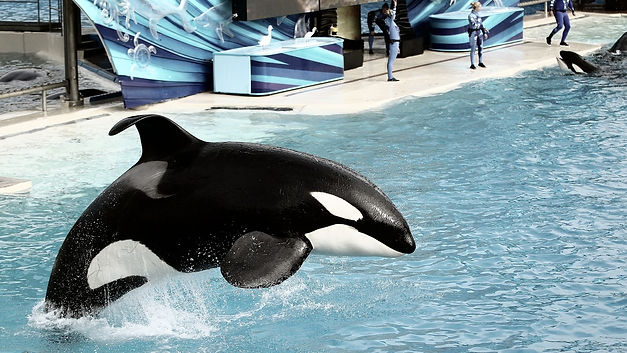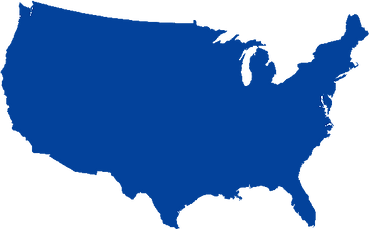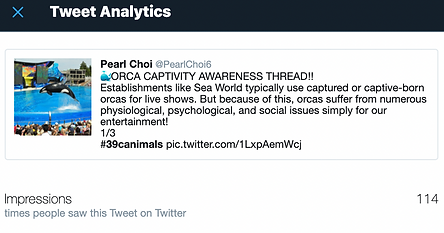WRITING 39C - ANIMAL SCIENCE

Orcas: Social predators & captive Killers
BY PEARL CHOI
JUNE 3, 2021
introduction
WHEN ONE THINKS OF A "KILLER WHALE", what comes to mind is a powerful, ferocious predator painted in black and white. The term “killer” strikes first and media is mixed with the horrors of Orlando Seaworld trainer Dawn Brancheau’s death in 2005 by the very animal she supposedly tamed and pushes to end the killer whales’ dying in captivity and holding authorities accountable (Huggan). It is because of this veil that some fail to see that they undoubtedly have “behavioural cultures . . . [with] no parallel outside humans” (Rendell and Whitehead 1).
To introduce evidence of their social awareness and intelligence, this work will open with a study describing orcas in captivity exhibiting actions in line with Theory of Mind and social empathy. The next study follows killer whale mothers and calves to discuss how changing resting behavior relates to overall parental investment. The final study investigates why and how orca socialization and long term survivability suffers in response to the death or mortality events.

Killer whales stick together in groups called pods. These pods can grow up to 40 individual members. The cooperation and social bond among pod members is crucial to hunting and survival.
The purpose of this work is to shine a light on the highly social lives of killer whales in hopes of informing others of the existing similarities between killer whales and humans. By being willing to understand what we share with orcas, the reality of the information can work towards uprooting the wrongs done to them and strengthening empathy. Should aggression stemming from vulnerability distract us from looking beneath the water’s surface and not see for ourselves an animal worthy of conversations needed to shatter the tanks they are confined in to entertain us? Should we not see an animal worthy of enough respect to not simply label a killer, but an animal complex and compassionate like us?
Familiar Social Behavior in Confinement
In professor of animal welfare and ethics at the University of Winchester, Andrew Knight et. al’s study “Orca Behavior and Subsequent Aggression Associated with Oceanarium Confinement”, Knight, alongside research members Anderson and Waayer document social behaviors of four killer whales, Canuck, Katina, Kasatka, and Kotar, at the San Diego Sea World facility and connect their behaviors to the overarching Theory of Mind and subtopics such as social empathy. Carl Safina refers to psychologist Naomi Angoff Chedd when defining the Theory of Mind and cites it as such: “‘knowing that another can have thoughts that differ from yours’” (244). Theory of Mind (subsequently abbreviated to ToM) stands not only as the controversial standard of animal versus human intelligence, but encompasses and serves as the backbone behind social behavior and cognition. It is a concept that inadvertently creates gaps between humans and animals, in this case between humans and orcas, but it also recognizes that “both species’ successes are based on complex social life” (Knight, et. al. 2).

Depicted above is a picture of Kosatka (behind) and Kotar (front) from Waayers's time observing the pair during the time of the study.
Supplementing the previous statement, Knight et. al. preface about behaviors observed among orcas that when also seen in humans would indicate affectionate bonds and of the behaviors listed, “mutual focused attention” (3) is evident in the orcas’ motivation to seek positive interactions and their actions to do so. As an example, research member Waayers observes a coordinated prank between Kotar and Kasatka. The two orcas alternately beach themselves to be rubbed down, but when one was approached would return to the waters. Then, the other would follow by beaching itself further, repeating this behavior, and ultimately allow no one to actually get close to touch them (5).
Deception is often a tool in the repertoire of ToM with pranks posed as the more humorous side of it. The element of pretend at play as Yellowstone veteran wolf watcher Rick McIntyre describes “shows that you understand how your actions are perceived” (Safina 144). ToM is not limited to jest and includes empathy. In another instance, Knight et. al. reference former trainer John Hargrove’s account in which after an accident during a performance with Kasatka and Kotar’s daughter Takara, Takara uses echolocation then nudges Hargrove to the edge of the pool. To surprise, Hargrove reports later having injuries including broken ribs. This behavior suggests and reflects social empathy as Takara notably relates to Hargrove’s perspective, comprehends his potential feelings, internalizes them herself and acts accordingly (7). Though observed in captivity, social cognition and behaviors are preserved despite the difference in environment (as opposed to in the wild). If anything, this approach has led to a display of killer whales’ social capabilities in both unique human-orca and orca-orca interactions.
Killer Whale Mother’s Role in the Calf’s Development and Socialization
When looking at how sociability is facilitated, one can turn to upbringing and see how a parent nurtures and contributes to these qualities. St. Mary University psychologist Hill et. al.’s study “Developmental Changes in the Resting Strategies of Killer Whale Mothers and Their Calves in Managed Care from Birth to 36 Months.” delves into the development of resting strategies between killer whale mothers and calves. In the study, the swimming behavior of four mother-calf pairs are observed through video surveillance and categorized the the types which range from SS1 (lax floating behavior) to SS3/4 (significantly active swim).

In the first four weeks post-parturition, “tests indicated that significantly more active swims (SS3/4) occurred” (Hill et. al. 448). This early trend in the mother-calf pairs’ synchronized swimming not only lends itself to the calves becoming efficient swimmers but also as a developmental gauge for the mother to use. As the calves developed over time, the study notes “[t]he appearance of a steadily increasing trend to engage in slower, patterned mother–calf swims . . . suggest[ing] that the mothers may have adopted a resting strategy that favoured the current level of calf development” (461).
The graph above from Hill et. al.'s study shows the swimming trend in the mother-calf pairs with respect to the calf's age
To explain this, Hill et. al. look to evolutionary biologist Robert Trivers’s parental investment theory (1974) in predicting “the presence of maternal-initiated regulation of rest and general activities of cetacean calves as long-lived animals with extended periods of dependence” (462). The regulation of general activities is also exhibited with the mother designated as the one initiating both the swim type and speed in synchronized swimming. In addition, when one calf was away from the mother, the study points to the potential of the mothers’ role in halting their calf’s social activities to transition into resting. With these behaviors in mind, the results of the study corroborate the integral role killer whale mothers play. The additional observations among killer whales extend into the nature of parental investment apparent in other mammals such as humans. Consequently, studies like this one help shape and understand the essence of the mother-calf bond and prove significant in seeing how these bonds mold mammal development.
how death unravels social structures
In highly social species such as killer whales, group living proves instrumental for the survival of every individual. Because of this, the death of a member in a pod creates a ripple and affects the remaining members. Université De La Rochelle's Busson, Marine, et al.’s study “Role of Sociality in the Response of Killer Whales to an Additive Mortality Event.” specifically investigates the aftermath of these events as result of illegal fishing and how they change both social structure and behavior. Association value among orcas is observed across three periods (pre illegal fishing, illegal fishing, post illegal fishing) and is represented by the half weight index variable (HWI) which ranges from 0 (never together) to 1 (always together).
Although killer whales find strength in numbers, the study indicates that group size is not the prime factor in the survivability of adult killer whales, but the strength in associations. When comparing trends among the three periods in Table 1, Busson and team observe “[b]oth the mean HWI and the mean sum of associations decreased from the preillegal fishing period . . . to the illegal fishing period” (11814). These values subsequently returned to values close to the preillgal fishing period as it was made illegal, but the significant decrease in HWI points to a decline in survivability. The low means and high sum of associations reflect surviving members looking to increase associations to sustain optimal group sizes. However, despite these efforts, “these interactions were loose and individuals in the social groups most impacted by illegal fishing did not reassociate in stable groups” (Busson et. al. 11815).

The graphic above from Busson et. al.'s study depicts the relationships of a pod before, during and after suffering the loss of a member. Connections slowly decline after a mortality event and causes the pod to unravel.
Fishing activity during the illegal fishing period led to the disruption of killer whale social groups as they suffered the losses of pod members. This social disruption includes impeding social activities that carry adaptive value in surviving such as : “food sharing, cooperative foraging, defense against predators, and caring for juveniles” (Busson et. al. 11812). In addition, given the matrilineal nature of killer whale units, females are known for “tak[ing] care of their kin, protect[ing] them during attacks, transmit[ting] ecological knowledge like hunting techniques, and shar[ing] prey with them” (Busson et. al. 11815). Taking into consideration the mother-calf relationships in the previous section and the behavioral cultures described here, the loss of individuals in groups due to mortality events gives rise to instability across the group’s future relations. With those in mind, the results of this study emphasize the importance of maintaining structure in highly social species.
discussion
THE TERM SPECIESISM was coined in 1970 by English philosopher and psychologist Richard Ryder. Speciesism is defined by the disparity of treatment of individuals of a different species. To overcome speciesism the artificial barrier between homo sapiens and non-human animals must be broken by acknowledging for ourselves that we too are animals. By having an understanding of what is in a non-human animal’s social lives we are given an opportunity to assess the extent of what we share with them: the capacity to suffer. English philosopher Jeremy Bentham posed as such, making it the chief criteria of morality: “The question is not, Can they reason?, nor Can they talk? but, Can they suffer”? Superiority as a species should not be assigned due to intelligence or speech nor should we use this superiority as a platform of moral privilege. Instead, the correct approach would be to recognize this privilege as humans and take on our unique moral responsibility to include non-human animals into equal moral consideration.
We must question and correct how we presently use killer whales and then apply this change to future conservation efforts. If like us that killer whales flourish from the connections they create and carry, should these parallels not be a call to action in how we treat them?
defining problems
AS HUMAN ACTIVITY disrupts ocean systems with pollution and fishing vessels, subsequently the social systems will be affected. The severity of this damage towards the environment combined with the small success to recover among the individuals from such events is detrimental to the killer whale species’ overall survival. But if not plaguing their homes, humans instead take killer whales from them and treat them as toys, objects of amusement than seriousness.
According to the Whale and Dolphin Conservation (WDC) organization, since being first placed in captivity in 1961, 166 orcas have been taken into captivity, but 129 of these captured orcas are dead. To add to this, WDC also reports: “at least 168 orcas have died in captivity, not including 30 miscarried or still-born calves”. We capture, train, and tame killer whales for temporary entertainment whether it be displays of tricks or suffocating petting pools that inevitably lead to pseudo-relations with passerbys. Then, when incidents arise with the animals’ aggression (developed from these unstructured establishments) and injury or death results, responsibility is feigned with little strides made to remedy the animals’ well beings. To speak hypothetically, if humans forcefully capture

Whale and Dolphin Conservation is an organization dedicated to fighting for the survival of whales and dolphins, tackling issues such as pollution and captivity.
other humans from their homes, separate them from family and friends, and make them perform under inadequate conditions or space, it is compared to the likes of slavery, an issue of man’s humanity and the rights of the enslaved. However, the very same happens to killer whales, traded among various countries’ “abusement” parks with no regard of what they have already endured, the audiences and industries who watch them perform label it a spectacle and a display of wonder. Backed by flawed policies like the Marine Mammal Protection Act, captivity was never a method of strengthening survival, but a tool of fostering ignorance among the park goers of the cruel reality.
To preface, the Marine Mammal Protection Act (MMPA) was first passed in 1972 then amended in 1988 and 1994, specifying permits granted for exhibiting marine mammals in education or conservation-oriented programs and transferring authority to the Animal and Plant Health Inspection Service (APHIS) respectively (Dougherty 338). A part of the regulatory system includes maintaining life history or clear inventory of species under captivity, but within these reports lies disturbing histories of low birth rates and high mortality rates. Noted in a study of captive killer whale survival, Jett and Ventre mention poorer survival to age milestones hiding behind the supposedly positive survival rates as result of captivity. Just looking at differences in female killer whales, reportedly 62-81% of wild females reached 15 years of age while only 27% of their captive counterparts lived to that age and beyond (Jett and Ventre 1373). Although APHIS and other agencies such as the United States Fish and Wildlife Service set the standards for space requirement, water quality, or handlers, these standards are in fact outdated with more crucial regulations still left unrevised since 2001 (Dougherty 341). Still, if killer whales and other marine mammals are not suffering by fractured standards and the poor care by the industries that follow them, their suffering remains unheard behind marine parks’ shallow attempts at both education and entertainment. These parks barely stress conservation and their efforts to educate visitors about the species they host are equally lacking. What should be understood is that the flashes of showmanship in live show performances “have no relationship to natural behaviors and therefore [have] no educational value” (Dougherty 344).
Few patrons visit these parks to learn about the animals and fewer go in and out of these establishments learning about conservation. Even within these parks, there is an active exclusion or manipulation of information given to park goers. Some of the vital information kept includes material on “marine mammals’ natural habitats and behaviors, social structures, biology and roles in the marine ecosystem” (Dougherty 345). These empty experiences imparted onto visitors do nothing to educate them of killer whales and do not aid in at least increasing their empathy. To compare, the French undersea explorer and conservation Jacques Cousteau has made the following remark:
"There is about as much educational benefit to be gained in studying dolphins in captivity as there would be in studying mankind by only observing prisoners held in solitary confinement”.
As shown above, these parties together build a triangle of irresponsibility, composed of the lack of responsibility in regulation among authorities, proper care in the industry, and awareness in the public. Entertainment is not a substitute for education and cruel captivity should not be the prime tool of conservation. By continuing the cycle of captivity, we also continue to facilitate a culture of humans as complicit observers of nature, oblivious to the role we also play in it as the ones to take on the moral responsibility of properly conserving it.
solutions to address
killer whale captivity
Dissecting the aforementioned triangle of irresponsibility, the foundation and standard of care carried out by establishments and the product of that care, the wellbeing of the orcas viewed by the public, stems from the obvious flaws in legislation or lack thereof. In recent years, there have been several successes or attempts to confront this. For example, signed into state law by California Governor Brown in 2016, the Orca Protection Act became the first piece of legislation of its kind to tackle orca captivity (Animal Welfare Institute). In this law, orca captivity for purposes such as live show performances were banned and programs that bred orcas and/or circulated genetic material for breeding in captivity were also halted. Even prior to California’s actions, a 1992 South Carolina law was amended in 2000, expanding its protection from dolphins and porpoises to encompass all sea mammals (AWI). While the two examples above have been successfully implemented on the state level, the shortcomings of current policies also must be addressed, with the one to scrutinize most being the Marine Mammal Protection Act of 1972. The MMPA should be amended accordingly to not only fix the existing standards but to also ensure orca captivity can begin to be resolved on the federal level. Fortunately, a bill called the Orca Responsibility and Care Advancement Act (ORCA Act) with this exact purpose was introduced in 2017 by California Congressman Adam Schiff. In his online press release, Schiff prefaces, “‘[In 2016], SeaWorld made the voluntary and laudable decision to phase out orca captivity in its parks, but these changes need to be made permanent across the country not just at SeaWorld, but in all parks’”. Supported by animal welfare organizations such as Born Free USA and the Animal Welfare Initiative, this bill would not only further halt the practices previously mentioned in California’s Orca Protection Act but it would also take a step towards stopping the issuing of permits to keep killer whales in captivity with the correct exception of using the permits to transport the animals to dedicated sanctuaries. However, the ORCA Act’s introduction was short lived and unfortunately “died” in the House of Representatives. Despite this though, the ORCA Act proposed by far the most ambitious approach to dismantling killer whale captivity. The addition of preventing industries from obtaining these permits can subsequently put an end to the supply of killer whales spread across the country.
Marine Mammal Protection Act

1972
1988
1994
2001

Orca Protection Act
2016
1992 Protection Law

1992 2000
This graphic ( made by me) is a summary of state and federal legislation mentioned above that have been/are implemented along with relevant years they were introduced and/or amended.
From left to right: United States, California, South Carolina
Although this policy’s endeavors were cut short, it is vital that when future bills like the ORCA Act are proposed and developed, not only are the core solutions made important but the stress in severity of the issues they are made for are as well. The issues and consequences should not only be brought attention to policy makers but must be especially made apparent to the public, which connects to another part of the triangle: lack of awareness.
The lack of awareness among the public originates from insufficient education or accessibility of information about the existing issues. With this lack of awareness, there is then absence of action from the side of the public. To counter this, we can take it upon ourselves to understand and educate ourselves of what is actually happening in these tanks. This includes staying informed of what happens in these parks, how they happen and why they happen. With that in mind, there are a variety of actions that we as the public can be taken to help end captivity. The proof is there and it now becomes a matter of urging people to build or use platforms to continue the momentum of discussing it.
According to the Dolphin Project, there are four main ways to participate in stopping captivity: signing petitions, spreading awareness, supporting conservation/rescue efforts, and getting involved. These methods are not exclusive to one another and actually interrelate in helping one another. Signing petitions does not only mean simply signing your name to collective pushes but it also encompasses personal pledges to not support or visit establishments that host cruel live shows featuring killer whales. To be specific, the thing that catalyzes all of these efforts comes from spreading awareness. Social media is the most accessible and fastest outlet of sharing information. Campaigns and calls to action are fueled by the accumulated interest and push to rectify the problems. In my personal social media campaign, I had created a Twitter thread dedicated to providing awareness about killer whale captivity, including an overview of physical harms and a source from a former orca trainer. The screenshots below depict the first tweet of the three-tweet thread and analytics of that tweet.

The image to the left is a screenshot of the first tweet of the captivity awareness thread (as noted on the bottom written as “1/3”).
The above image is a screenshot of the analytics of the tweet showing that the tweet was seen 114 times or in other words, potentially over a hundred people have seen.
Social media like Twitter not only helps to lend voices to the orcas silently suffering, but it also gives visibility. If spreading awareness from the investments of likes and retweets can do this, money can do much more.
Although money may be one of the incentives for exploiting killer whales, it can also serve as a positive contribution for building something better for them: sanctuaries. Organizations such as the Dolphin Project or WDC have sanctuary projects in part funded by donations from those like us to create facilities that provide rightful care to orcas and other dolphin species retired from marine park entertainment. Sanctuaries are not just safe havens to properly care and rehabilitate these killer whales. One should closely consider their definition as given in the ORCA act’s bill:
The term ‘sanctuary’ means a place of refuge where marine mammals—
“(A) live in a setting as close as possible to their natural environment;
“(B) are prioritized individually with respect to well-being and autonomy; and
“(C) are not used for profit or bred.”.
If you understand the meaning and purpose of a sanctuary, you also may infer that the antithesis of this aligns exactly with the current realities of killer whale captivity. While killer whales are trapped in tanks nothing like the natural ocean, their health and wellbeing are unwillingly traded to line the pockets of the captivity industry.
the pro-captivity view

SeaWorld is one of many parks that have hosted killer whales and dolphins in live show performances. After outrage from the public and substantial loss in profit, it ended live shows featuring the animals.